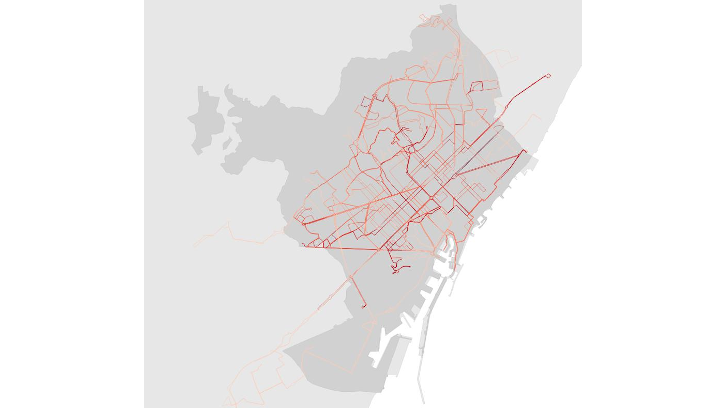Congestion in the city: an obstacle to frequency of bus use

Researchers from the Department of Applied Economics of the UAB have studied how high levels of congestion affect the reliability of urban bus service in Barcelona, reducing the likelihood that individuals will become frequent users of more environmentally friendly transport. Reducing congestion and improving the efficiency of public transport would significantly increase bus use.
The idea of congestion is expected to be at odds with the probability of being a frequent user of the bus public service. High levels of congestion lower the reliability of the bus urban service and, hence, the likelihood of becoming a frequent bus user. Nevertheless, the bus public service enjoys the reputation of representing a service of proximity given the high density of bus stops per spatial unit relative to, for example, subway or rail stops. The bus service guarantees the greatest degree of capillarity among all modes of public transportation, and this turns out to be extremely useful for groups of citizens (like aged persons) who may experience difficulties in becoming users of other public transport services like the metro.
Our study brings novel quantitative evidence on characteristics that could shape the probability of becoming a frequent bus user. We rely on original data taken from a survey run in Barcelona in 2017 among bus users. Our empirical analysis confirms that the probability of becoming a frequent bus rider (meaning making more than 3 bus rides per week) is driven mostly by the level of congestion experienced during the bus rides. Nevertheless, not all groups of users show the same attitude: users with a high education level (graduate or higher) and daily commuters (people who regularly travel from home to work) using the city’s bus services are particularly sensitive to the level of congestion. We approximate that a 10% reduction in congestion (implying passing from taking 11.78 minutes to 10.60 minutes to cover one kilometer in an urban ride) would increase by almost 40% the probability that a daily commuter with a university degree will become a frequent bus user, whereas this percentage drop to almost 13% in the case of a daily commuter with primary education.
The main channel that can justify this different behavior is associated with individuals’ pro-environmental behavior. In the literature, it is well known that people with university degrees have the skills needed to understand the complex effects and consequences of climate change and thus feel more responsible for those effects and consequences than people without such education. This attitude increases their probability of becoming users of greener modes of transportation.
And so, what to do to fuel these attitudes? Initiatives targeting the reduction of congestion and travel times for urban rides are the most effective strategies for promoting greener means of transportation. Good initiatives could be to increase the frequency of urban rides and, beyond that, improve the efficiency of the new public bus network using a transfer-based network combining different types of public means of transport. Another policy that could be effective in Barcelona is one linked to the speed of the transport service (e.g., direct rides versus rides with several stops), which can help to smooth the congestion’s effects by providing advantages for direct rides, for instance, albeit at a higher price.
Miquel-Àngel Garcia-López; Rosella Nicolini; José Luis Roig Sabaté
Department of Applied Economics
Universitat Autònoma de Barcelona
MiquelAngel.Garcia@uab.cat; Rosella.Nicolini@uab.cat; JosepLluis.Roig@uab.cat
References
Garcia–López, Miquel-Àngel; Nicolini, Rosella; Roig Sabaté, José Luis (2024). Understanding high-frequent bus riders: Congestion, education, and riders’ preferences. Case studies on Transport Policy, Vol.16, p.101187; open access https://doi.org/10.1016/j.cstp.2024.101187


